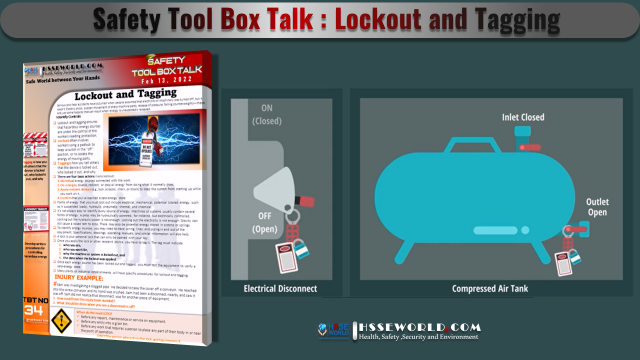Electrical Safety Code Manual by Kimberley Keller. A Plain Language Guide to National Electrical Code, OSHA, and NFPA 70E. This book will tie together the various regulations and practices for electrical safety and translate these complicated standards into easy-to-understand terms. Even veteran master electricians will find it informative and gain a new understanding of how to minimize their exposure to possible injury. After all, you’re worth it. Employers, electricians, electrical system designers, inspectors, engineers, and architects must all comply with safety standards listed in the National Electrical Code, OSHA, and NFPA 70E.
All construction trades come with a degree of physical risk. Early in our country’s industrial history tradesmen discovered through trial and error which construction methods were the easiest to perform. Unfortunately,
easier was not necessarily safer, and many tradesmen were injured or even killed performing their jobs. Over time other factors surfaced, such as the results of poor quality construction methods that lead to the destruction of property. The potential for electricity to start fires, burn, shock, and even kill became quickly apparent and it was obvious that a set of guidelines was needed to reduce the likelihood of damage to both property and people.
By the late 1800s, more and more people were depending on electricity to power an ever-increasing number of conveniences from light bulbs to elevators. Installation techniques were based on trial-and-error, experience, and best judgment. This left the door open to a multitude of installation techniques, a complete lack of continuity, and a dramatic increase in the number of injuries and fires caused by electricity. Coincidentally, in 1890 Edwin R. Davis, an Auburn Prison electrician, designed the electric chair that utilized 1400 V of direct electrical current for the sole purpose of causing death. Its first use in August of that year was a gruesome example that electricity could kill a person.

Between the increasing demand for electricity and the shocking reality of its deadly potential, it is not surprising that the need became apparent for some kind of uniform regulation process for electrical installations.
In 1897 the National Fire Protection Association (NFPA) issued the National Electrical Code (NEC), commonly known today as the NEC. Since that time, the NEC has instituted standards designed to protect both people and property from electrical damage. Although the NEC is not itself a U.S. law, it is commonly mandated by state and local laws.

The need for standardized code
The benefit of having one standardized set of regulations is clear. In the U.S., any person, company, or principality can be sued for creating a negligent situation that results in the loss of life or property. Never in the city issuing building permits exempt from this civil liability.
Negligence is generally defined as a failure to use reasonable care or prudence which results in injury or damage to a person or property. In order to establish reasonable care, uniform standards are needed which establish best practices for safety in trades and industry.
A municipality can best avoid lawsuits by focusing on a single source of proven safety codes, and the NEC has become the most widely accepted standard set for electrical requirements. Most states require electrical installations to be inspected for compliance with the standards of the NEC. A failed inspection will cost you time and money to fix and can stop your project in its tracks. Additionally, a majority of states also base their licensing programs and mandatory examinations on
Contents
The Contents of Electrical Safety Code Manual
- Regulatory Agencies and Organizations
- Establishing an Effective Electrical Safety Program
- Recognizing the Real Dangers of Electricity
- Electrical Safety in the Workplace
- Working on Energized Parts and Equipment
- Electrical System Grounding and Bonding
- Safety Grounding Principals
- Understanding Arc Flash and Arc Blast Hazards
- Practical guide to electrical grounding
- Specific Requirements of the NESC
- NEC Standards of Safety
- OSHA Regulations Simplified
- Accident and Injury Prevention and Procedures
- Safe Work Practices
- Electrical safety tips
Download the book
Electrical Safety Code Manual
More Downloads
- E-Books: Healthcare Hazard Control & Safety Management
- E-Books: Safety, Health and Working Conditions Training Manual
- E-Books: Energy Efficiency in Water and Wastewater Facilities
- E-Books: Fire Service Features of Buildings and Fire Protection Systems
- E-Books: Evaluation of Fire Safety free download
- E-Books: PPE for Chemical, Biological, and Radiological Hazards free
- E-Books: Changing the Workplace Safety Culture free download
- E-Books: Site Emergency Planning Workbook
- E-Books: Load Restraint Guide
- E-Books: Essential Practices for Creating, Strengthening, and Sustaining Process Safety Culture
- E-Books: System Safety Engineering and Risk Assessment
- E-Books: Permit-Required Confined Spaces
- E-Books: Is it Safe to Enter Confined Space?
- E-Books: 5-Minute Workplace Safety Talks
- E-Books: Safety Culture and High-Risk Environments
- E-Books: Practical Guide to Industrial Safety
- E-Books: Slip, Trip, and Fall Prevention for Healthcare Workers
- E-Books: Health and Safety at Work Key Terms
- E-Books: Fundamentals of Process Safety Engineering
- E-Books: Gas Detection Hand Book
- E-Books: Occupational health and safety management systems ANSI-AIHA-z10-2012
- E-Books: Hot Work on Drums and Tanks
- E-Books: Human Fatigue Risk Management
- E-Books: Guidelines for the provision of facilities and general safety in the construction industry
- E-Books: Handbook of Training in Mine Rescue and Recovery Operations ( 2021)
- E-Books: Code of Practice for the Safe Use of Lifting Equipment – Edition 9 (Nov 2019)
- E-Books: Free Forklift Health and Safety Best Practices Guideline
- E-Books: Handbook of Hazardous Chemical Properties
- E-Books: Human Performance Improvement through Human Error Prevention
- E-Books: Principles Of Fire Risk Assessment In Buildings
- E-Books: Investigation of Occupational Accidents and Diseases
- E-Books: Radiation Protection and Safety in Industrial Radiography
- E-Books: Basic Guide to System Safety, Third Edition
- E-Books: Food Safety Management-A Practical Guide for the Food Industry
- E-Books: Safety identification: Escape and evacuation plan signs- ISO 23601
- E-Books: Safety at Work
- E-Books: The Safety-Critical Systems Handbook 4th edition
- E-Books: Fundamental principles of occupational health and safety
- E-Books: Fire Safety Risk assessment Guide – Sleeping Accommodation
- E-Books: Mental health at work series
- E-Books: Live Fire Training: Principles and Practice
- E-Books: Pre-Startup Safety Review Guide
- E-Books: Fire and Emergency Drill Manual and Building Inspection Guide
- E-Books: Health and Safety: Risk Management 5th edition
- E-Books: Fire Protection systems -Third edition 2021
- E-Books: Fire Safety Logbook templates
- E-Books: From Accidents to Zero
- E-Books: Electric Safety Practice and Standards
- Your steps to chemical safety
- E-Books: Ergonomics and Psychology Developments in Theory and Practice
- E-Books: HAZOPS Should BE fun-The Stream-Based HAZOP
- E-Books: Safety Health and Environmental Auditing
- E-Books: A Quick Guide to Health and Safety
- E-Books: Occupational Ergonomics A Practical Approach
- E-Books: Job Hazard Analysis A Guide for Voluntary Compliance and Beyond
- E-Books: Electrical Safety of Low Voltage Systems




